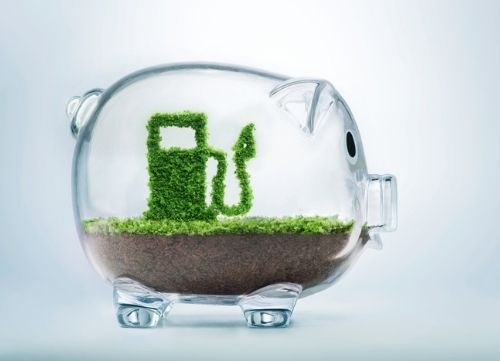Just over a year on from a budget briefing that brought with it a truck-load of talking points for fleet businesses, Chancellor Rishi Sunak has delivered a Spring Statement for 2022 with just one real salient point for our industry: a one-year fuel duty cut of five pence per litre taking effect at 6pm tonight, 23rd March.
The change takes the price of fuel duty down to 52.9 pence per litre from 57.9p; a figure it’s been frozen at since 2011. The intent is for it to offer help to motorists and fleet businesses alike amidst a recent fuel price hike – heavily impacted by the conflict in Ukraine – that’s seen petrol (167p per litre) and diesel (179p per litre) hit worrying new heights in recent weeks.
On the whole, the motoring community seems divided on the changes. The AA commented that the chancellor had “ridden to the rescue of UK families and businesses who use their vehicles, not for pleasure, but to function in their daily lives.” And with the change effectively knocking around £3 off the cost of filling a 55-litre engine, there is some truth in that.
However, a statement from The RAC called the change “a drop in the ocean” for motorists, pointing out that it effectively takes fuel prices “back to where they were a week ago."

There is also a concern that some fuel retailers may not pass on all of the savings to motorists. For instance, Fleet News reports that a temporary 5% VAT cut would have led to an extra £1 saving on filling the same engine size. Fleet World, meanwhile, highlights that a VAT change would also have stopped the possibility of retailers holding on to some of the savings themselves.
Our initial response to The Budget 2022 is a sense of relief that measures have been taken in the short-term to lower fuel expenditure at the pumps, with the benefits due to be felt immediately by both private motorists and fleet-based businesses alike.
However, we are more conscious that fuel duty changes could prove a temporary measure.
Looking at the longer term, the motoring world’s move to electric vehicles will accelerate as we approach the end of the decade, when the blanket ban on manufacturing new petrol and diesel vehicles takes effect. As that happens, current road tax revenue will plummet, and the Treasury will find it needs to fill a £35bn gap in its coffers.
So, while the current changes should go some way towards lowering fleet fuel costs over 12 months, we’ll be more curious to see whether the government adapts to adopt a road pricing model based on miles driven instead. We’ll therefore be intensely interested to see what announcements the Autumn Budget brings.
While the lowering of fuel duty could be seen as undermining any incentive for drivers and fleets to move to Electric vehicles (EVs), this is likely to be offset by the prospect of fuel prices increasing further.
Indeed, Fleet News reports that petrol prices could reach £2.40 a litre, and diesel even more at £2.50. Even £3 wouldn’t be a complete shock to price forecasters, even though it would definitely be a shock to the system for many fleet businesses, who might need to adjust their budgeting dramatically.

With that in mind, the incentive for both fleets and everyday motorists to move towards electric vehicles has certainly grown. Even with energy prices increasing alongside fuel ones, the outlay from electric charging could end up significantly lower than escalating petrol and diesel costs, as the UK moves away from using Russian fossil fuels.
At SG Fleet we’re well placed to help your fleet business move from petrol and diesel vehicles to an all-electric future, all in a way that works sensibly within your timelines and budget. Not only does our team have decades of combined experience in fleet management, but our leasing team offers a market-leading EV solution for light commercial vehicles (e-LCVs).
To find out how we can help you sidestep rising petrol and diesel costs by going electric, visit our eStart page, then email CSalmon@sgfleet.com to kick off a more in-depth discussion of your fleet’s specific needs.